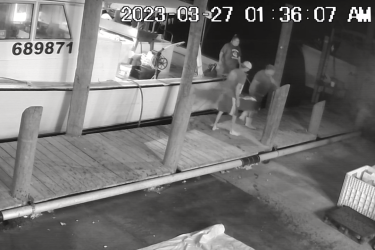Most commercially and recreationally-important fish species in south Florida and the U.S. Caribbean spend some part of their life cycles in or near mangroves, including shrimp, spiny lobster, snapper, grouper, and jacks, supporting designation as essential fish habitat (EFH) under the Magnuson-Stevens Fishery Conservation and Management Act. Florida shrimp and lobster landings commanded the greatest dockside value in 2015, double the leading fish species of grouper and snapper. In 2015, Florida supported the greatest number of fishing-related jobs overall (176,500 jobs). Florida also generated the greatest sales ($28.7 billion), income ($7.5 billion), and value-added ($12.5 billion) impacts from the commercial and recreational fishing industries combined.1

Red mangroves with prop roots, Photo credit: Mark Sramek, NOAA
There are more than 80 different species of mangrove trees worldwide growing in tropical and subtropical climates2. Only three species are found in the southeastern United States and U.S. Caribbean2 - white, black, and red mangroves. Generally, red mangroves grow most waterward, with white mangroves growing most landward, and black mangroves in between. A mangrove-associated shrub called buttonwood (Conocarpus erectus) occupies similar habitat as white mangrove in Florida and the Caribbean. In the Southeast, climate change has shifted the growth of mangroves to higher latitudes.
All of these trees grow in areas partially or fully inundated by saltwater and reduced oxygen in the soil. Two mangrove adaptations help them survive under these conditions: 1) prop roots extending out from the trunk down to the soil or pneumatophores which poke up from underground to allow oxygen to reach tissues as tides submerge them, and 2) they tolerate and take up saltwater and rid the salt through special leaf pores or filtration by pneumatophores.
Their prop roots and pneumatophores allow mangroves to stabilize shorelines, trapping sediments, reducing erosion, and offering coastal resiliency during waves and storm surges3. Mangroves filter pollutants and absorb excess nutrients from runoff improving water quality. They slow currents, allowing fine sediments to drop out reducing turbidity.
Mangroves buffer winds and lessen storm surge, reducing the effects of these forces on structures. Mangrove-lined creeks provide sheltered boat anchorages during storms. Property owners benefit from the protection mangrove shorelines provide during storms. When mangroves are removed shorelines are subject to erosion. Hardened shorelines do not offer the ecosystem services that submerged mangrove prop roots and pneumatophores do, attracting fishes and other organisms seeking food and shelter from predators. Epiphytic plants – plants that grow on other plants - and sessile animals grow on prop roots, such as: oysters, snails, bryozoans, and tunicates. Mangrove crabs eat the leaves and mangrove leaf litter supports both terrestrial and aquatic food webs. In southeast Florida, Lake Worth has lost 87% of its mangroves acreage over the last 40 years due to urbanization. In Florida’s Indian River Lagoon, 86% of mangroves have been lost as fisheries habitat since the 1940s4.
Through the EFH consultation process, the Habitat Conservation Division (HCD) provides EFH conservation recommendations to federal agencies which implement public projects or license/permit commercial and private projects requesting to remove mangroves such as a shoreline hardening project to replace mangroves with a seawall. HCD is mandated under the MSFCMA to conserve EFH so recommendations may include ways to avoid impacts to mangroves or minimize impacts through project design modifications, and as a last resort require compensation (called mitigation) for unavoidable impacts. This may be accomplished through creation of mangrove habitat elsewhere or through the purchase of mangrove credits at a mitigation bank already created in the same watershed. HCD assists with technical advice to project applicants about living shoreline designs and mangrove mitigation bank design elevations and contours ensuring mangrove success while minimizing turbidity and hydrology impacts to adjacent EFH.
References:
1Fisheries of the United State, 2015
2https://oceanservice.noaa.gov/facts/mangroves.html
3http://www.aoml.noaa.gov/ocd/ocdweb/docs/MARES/MARES_FKDT_ICEM_20130913_Appendix_Mangroves.pdf
4https://floridadep.gov/fco/fco/content/floridas-mangroves


